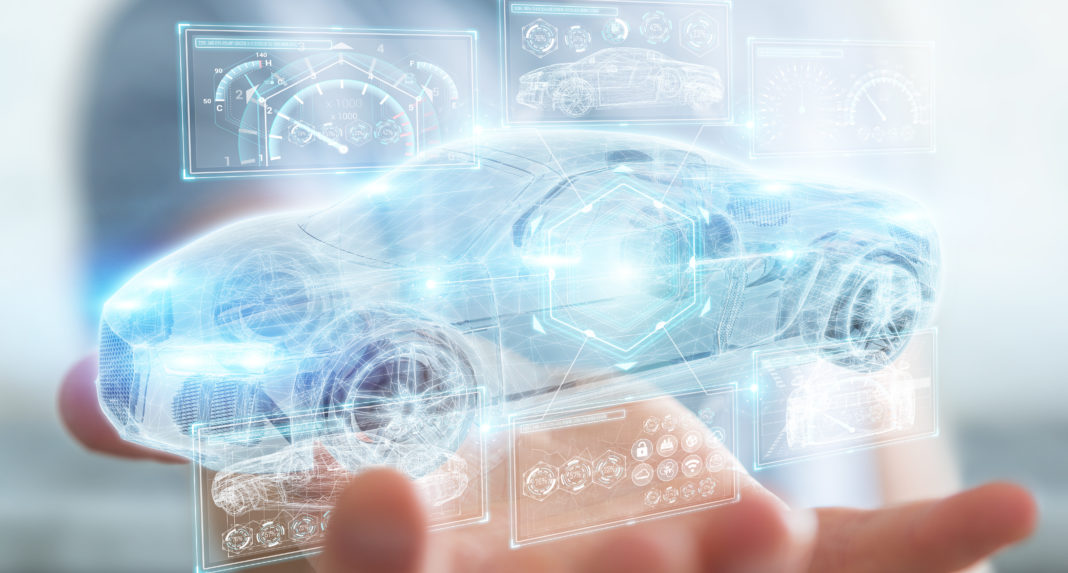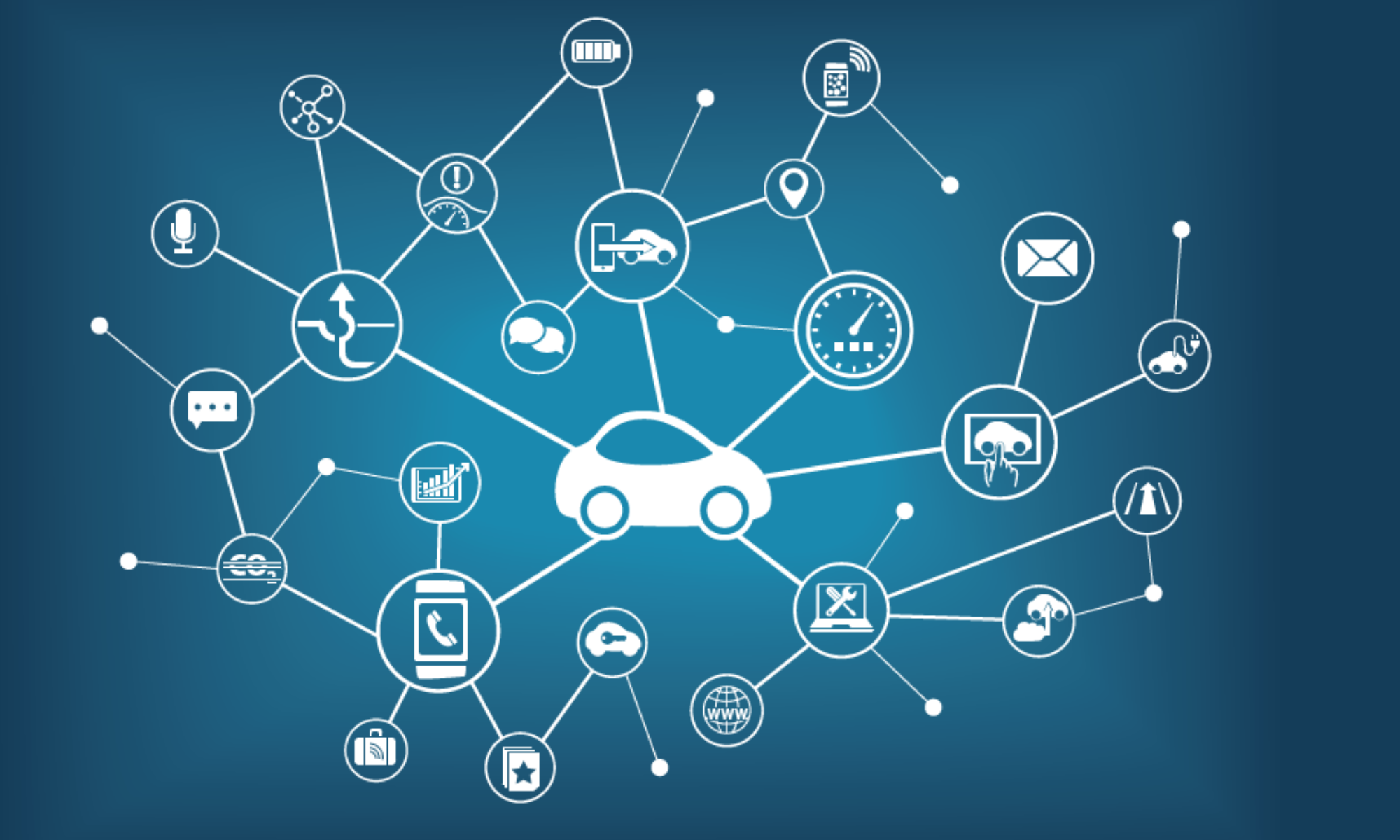March 4, 2021in Thought Leadership

by Greg Ross, Connected Vehicles Practice Lead, motormindz
Four Ways Dealers can drive their business forward with Connected Car
This article is the first in a four-part series exploring how Automotive Dealers can enhance their businesses and their customers’ experiences to drive revenue and loyalty.
It has never been easy to be a successful Auto Dealer. Dealerships are complex, evolving businesses, with large capital requirements, lots of regulations, a large number of employees to manage, and many other concerns from supply chain to customer experiences. But increasingly, dealers are faced with even more challenges from new and disruptive technologies like digital retailing, electrification, mobility services, and — somewhere on the horizon — autonomous vehicles. In addition to all these disruptors, dealers also need to be aware and prepared for the coming impact of vehicle connectivity, and how it will affect each and every component of their business — and their dealership’s top and bottom lines.
The Basics
In 2021, well over 80% of all new vehicles sold in the US will come with the ability to connect to the internet through a built-in cellular modem. That percentage is rapidly growing toward 100% of all new vehicles sold, according to the announced product plans of all of the major OEM’s. This means that today, almost all new vehicles are able to easily communicate data about both the vehicle itself, as well as its driver, and that many vehicles are also capable of receiving over-the-air commands and software updates directly.
In order to maintain security and to honor customer privacy commitments, these vehicle connections and the data shared over them are all exclusively routed through each OEM’s data centers. Within these data centers, the vehicle and driver data and the vehicle commands are stored and managed by the OEM, according to its data policies and the terms of use. Many OEMs use this vehicle and driver data for internal improvement purposes, such as in-field vehicle performance analysis and over-the-air software updates.
OEMs are also beginning to seek “monetization” opportunities by providing data and command access to 3rd party applications, such as insurance companies, fleet management companies, and data aggregators. Still others are using these new data connections to create their own value-added services, such as GM’s OnStar vehicle assistance and concierge program
So, with all of this OEM activity, where does the Dealer fit in? As it turns out, the dealer is actually essential in both enabling and realizing the potential value from all of this connectivity for both the OEMs and themselves – and so dealers should insist on more OEM support for development of connected car services tailored to enhance, streamline, and benefit dealer operations.
There are dozens of opportunities across all the departments of a dealership. This article will be the first in a series, where we will focus on laying out these opportunities in Sales and F&I (Finance and Insurance). In future follow-ups, we’ll take a closer look at Service, Parts, and even Collision Repair. The common thread will be to begin understanding and planning for the very near future when all of the cars and trucks running through the dealership are fully connected — capable of both sharing data about the vehicle and the driver, and receiving both commands and software updates.
OEMs and dealers will also have to work closely together to activate the opportunities created by connected car technology. They will need to work together to resolve questions of data “ownership” and responsibility, and to resolve policy issues such as warranty repair compensation for over-the-air repairs. Investments will also be needed to integrate connected car data with DMS systems, scheduling systems, on-line shopping and ordering systems, and many others. The goal, however, is worth pursuing because it promises to deliver a much better customer experience and much more efficient dealer operations.
Part I: A Vision for the “Connected Sales Department”
1. Ordering and Inventory
New vehicles become connected from the moment they pass final assembly at the factory. At the first “ignition on,” a data file is uploaded to the manufacturer’s data center, showing that all diagnostic tests have been passed, and showing the state of the battery, fuel, tires, etc. For customer orders, the dealer can use this data to send the customer a “birth announcement,” showing that the ordered vehicle has been built and is on its way. For dealer orders, the dealer gets a report, showing when ordered vehicles have been built. Dealers can then track the location of vehicles as they move through the logistics chain. Dealers get notices as vehicles pass checkpoints along the way, up until vehicles arrive at the dealership. Dealers can use this information to manage expectations with customers and to prepare their lots for arrival of new inventory. If any incoming vehicles report diagnostic trouble codes, such as a low battery or under-inflated tires, these vehicles can be flagged and repaired before going into inventory.
Once vehicles are delivered into dealer inventory, dealers can use an application to check the precise location of any vehicle on the dealer’s lot at any time. The application can also notify the dealer if the vehicle moves, or if it has maintenance needs. Dealers can leave keys in each car without fear of theft, because all vehicles are “locked down” and unable to start without authorization by the dealer. Floorplan inventory audits are greatly simplified and can be completed in minutes. The finance company only needs to remotely check whether financed vehicles are on the appropriate site. These functions can save the dealer time spent tracking vehicles and managing keys. Time is also saved in locating and preparing vehicles for demonstration and sale, and it becomes easier to identify vehicles that have been in inventory too long.
2. Demonstration and Sale
Vehicles are placed in demonstration service based on up-to-date information from on-line shopping by customers in the dealer’s local area. Using this data, commonly searched vehicles are identified from dealer inventory and placed into demo service, equipped with commonly searched accessories. Each demo vehicle has a demonstration app downloaded to the head-unit of the vehicle with the dealer’s logo and a suggested route for a test-drive. The vehicle greets the test-drive customer by name, using information sent to the vehicle by the sales representative. The app is synched to the drive and provides audio comments to highlight key features.
With full connectivity in place on the lot, dealers can have all demonstration vehicles connected and managed through a booking application. The application keeps track of when vehicles are available, when they are out, which space they are parked in, how many miles have been accumulated, and whether any of the vehicles need fuel or maintenance. Location-tracking can even confirm whether a vehicle has been through the car wash prior to the next scheduled drive. If desired (and with proper customer notification and consent), dealers can also monitor whether vehicles are being abused — driving at high speeds, taking corners aggressively, hard braking and acceleration, or even a collision. If the vehicle does not return, it can be tracked and recovered.
With extensive connected and personalization services in place, the dealer may also consider implementing additional sales tools, such as self-managed or after-hours test drives. Customers could book these drives on-line and access the vehicle through a unique authorization code. Dealers could also deliver customized, personalized communications to customers after a test-drive, based on where the customer went, how the vehicle was driven, and which features were used — all data recorded and communicated by the demo vehicle.
In preparation for delivery, the customer is asked about preferences for infotainment settings, HVAC settings, and other personalization features. At delivery, these settings, plus the customer’s home, work, or other important addresses, are pre-loaded into the vehicle via a software update. Alternatively, returning customers can have preferences transferred from their prior vehicle to the new one. At delivery, the vehicle can greet the customer by name, and offer a tour and further demonstration of vehicle features from an app on the vehicle head unit. Customer use (or non-use) of key vehicle features can be reported to the dealer (with customer consent) to let the dealer know about features that might be causing confusion. The dealer can then address these questions in post-delivery customer satisfaction calls, or offer to send a focused tutorial to the customer’s head unit for playback at the customer’s convenience.
3. Delivery and Post-Sale
At Delivery, the dealer ensures that connected systems are activated, and that customer consents have been properly recorded. This is a vital step because, without it, connected services post-sale cannot happen! Critically, customers are encouraged to allow the dealer to be automatically notified whenever the vehicle needs maintenance or service so services can be scheduled at the right time. This can also be an opportunity for the dealer to offer customized, connected service plans, with the vehicle accurately notifying the dealer of issues that need to be addressed. The dealer can use information from the customer’s daily drive to schedule service at the most convenient time. If the customer needs alternative transportation, a loaner can be managed through a connected courtesy transportation application at the dealership. The application ensures that mileage, maintenance and usage of the courtesy vehicle are managed to minimize costs.
4. Finance and Insurance
In the F&I department, customers are given the opportunity to purchase financing and insurance products that automatically adjust to the actual use of the vehicle. In a connected lease, customers can earn incentives or rebates if they use significantly fewer miles than scheduled. Customers can also earn credits for particularly good care and maintenance practices, which increase the value of the lease vehicle upon return. If a customer shows a trend toward excess mileage, he or she might be offered an opportunity to pre-purchase additional miles at a rate which is lower than the “over-miles” rate in the lease contract. These kinds of customized offerings have the potential to increase dealer margins while also improving customer satisfaction.
A connected car can also mitigate costs in the event that a lease or financing contract goes past due. Reminder messages can be easily delivered directly to the vehicle. In the event that the vehicle needs to be recovered, it can be easily located and immobilized.
Customers might be provided an opportunity to “sub-lease” their vehicles to offset their lease costs — along the lines of an airbnb. These kinds of schemes could be more easily enabled by connected technologies, which could allow easy booking and tracking of vehicles by the vehicle owner. A company called Lynk & Co has already described an approach like this as part of their launch in Europe this year. Dealers might see additional revenues from these programs by providing vehicles for these short-term rental services, and by providing pre- and post-rental and maintenance services.
In the area of vehicle insurance, connected technology will allow customer’s rates to be adjusted based on actual miles driven and on demonstrated safe driving behavior. In addition to data that is currently in use by insurance companies, policies might be further adjusted by looking at data such as activation of lane-departure warnings, close-following alerts, or other indicators of higher risk driving. In the event of a collision, data from the car’s sensors will be used to quickly and automatically estimate the damage and begin the claims process. With knowledge of the customized insurance products available on new cars, dealers might take a greater role in sales of connected auto insurance products.
Conclusion
These illustrations are only a quick view of the kinds of things that the Dealer should soon come to expect from Connected Car technology. And we have only touched on Sales and F&I! We will return in future posts to talk about the rich opportunities for Connected Parts and Service.
